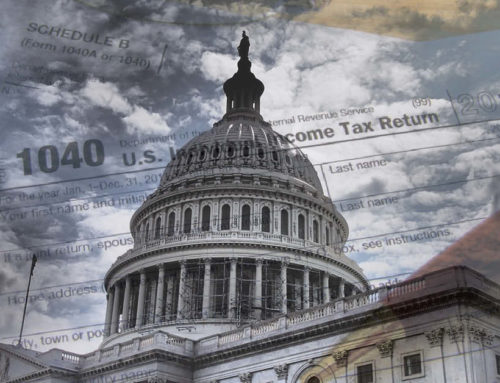The Department of Treasury released a one-pager yesterday, an “Analysis of Growth and Revenue Estimates Based on the U.S. Senate Committee on Finance Tax Reform Plan.” That’s a generous title, since it does not appear that the Treasury has undertaken a macro-economic analysis of the Senate proposal. The one-pager seems to be more about muddying the waters over the large revenue losses from the tax bill.
The one-pager states that Treasury “has modeled the revenue impact of higher growth effects, using the Administration projections of approximately a 2.9% real GDP growth rate over 10 years contained in the Administration’s Fiscal Year 2018 budget.” The FY 2018 budget request was released in May, months before the tax legislation was drafted, so it makes no sense to use that as a starting point for a dynamic estimate. But let’s continue.
The one-pager goes on to compare that growth rate to “a baseline of previous projections of 2.2% GDP growth.” Of the 0.7 percent difference between these two numbers, the analysis states the following: “We expect the other half” of the 0.7 percent “to come from changes to pass-through taxation and individual tax reform, as well as from a combination of regulatory reform, infrastructure development, and welfare reform as proposed in the Administration’s Fiscal Year 2018 budget.”
In other words, the Treasury has estimated how much additional tax revenue would be generated by predicted future growth based not on the Senate bill, but based largely on the administration’s original budget proposal. They appear to have worked the equation backwards instead of coming up with a real estimate. It is not 0.7 percent growth from the tax legislation alone, but also from regulatory reform, infrastructure reform, and welfare reform.
The nonpartisan staff of Congress’s tax scorekeeper, the Joint Committee on Taxation (JCT), has released a detailed description of their macro-economic analysis of the Senate bill. It concludes that the additional tax revenue from economic growth would be $408 billion over 10 years. (The JCT has also released a macro-economic analysis of the House bill, which has about the same effect, namely $483 billion over 10 years.) If the Treasury wants to offer a different estimate of these macro-economic effects, it must undertake a similarly rigorous analysis and transparently report on its assumptions, methodology, and detailed results. Yesterday’s document does not meet any of those requirements. It appears designed primarily to distract, rather than inform the debate.










